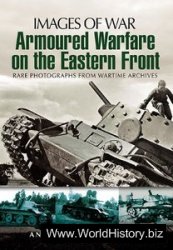One major reason that the Frankish and other early medieval horsemen
did not yet qualify as true, or full-ledged, knights was related to the nature
of their armor, weapons, and tactics. he armor worn by Frankish
cavalry consisted mostly of mail. It gave the wearer a fair degree of lexibility,
including allowing him to mount his horse and use his weapons
with more ease than would have been possible wearing heavier, more
rigid armor. A serious shortcoming of mail, however, was its lack of full
protection. Sword blows that struck it at an angle were often repelled,
but a straight-on thrust usually pierced mail shirts.
As did foot soldiers, early European cavalrymen employed swords
and spears, and in some cases bows, as well as shields. Trying to maneuver
these items efectively without falling of one’s steed was diicult
enough. So taking part in shock action—which usually entailed using a
lance (a long spear with a handle) in a frontal assault on an enemy—was
extremely diicult and risky.
A major cause of this limitation was that these light cavalrymen knew
nothing of an uncomplicated but crucial invention—the stirrup. As Archer
Jones points out, without stirrups, “a rider had to depend on the pressure
of his knees to hold himself on his horse. his feeble seat made it awkward
for a soldier, especially an unpracticed rider, to ight mounted.”14
he arrival of the stirrup in western Europe in the eighth or ninth
century was therefore a revolutionary advance in the evolution of cavalry
warfare in general and the full-ledged knight in particular. First, riders
equipped with stirrups were signiicantly better able to stay seated on their
steeds, even when a missed sword stroke threw them of balance. Also, Jones
writes, a cavalryman could “increase his height above an opponent on foot
by standing in his stirrups. In addition, this innovation made it possible
for mediocre riders to perform well and greatly enhanced the ef ectiveness
of the best heavy cavalry. h us, the stirrup, so simple in concept, produced
one of technology’s most fundamental modii cations in land warfare.”15
h e adoption of the stirrup made Frankish cavalry units, already superior
to other European mounted forces, truly fearsome. A Byzantine military
document of the period warned, “So formidable is the charge of the
Frankish cavalry, with their broadsword, lance, and shield, that it is best to
decline a pitched battle with them till you have put all the chances on your
side.” Overall, therefore, “it is easier and less costly to wear out a Frankish
army by skirmishes, protracted operations in desolate districts, and the cutting
of of supplies, than to attempt to destroy it at a single blow.”16




 World History
World History









